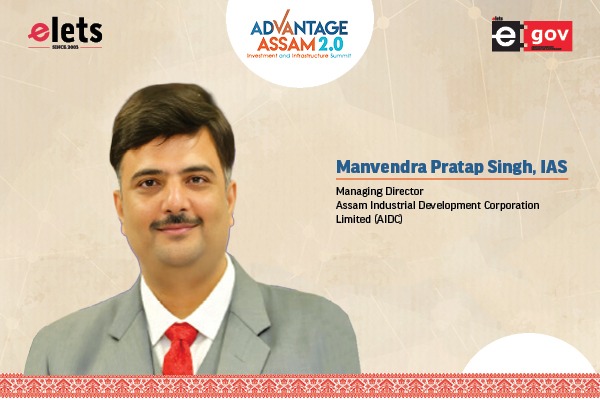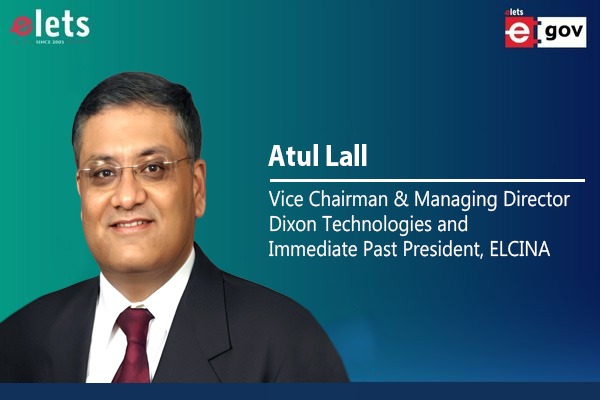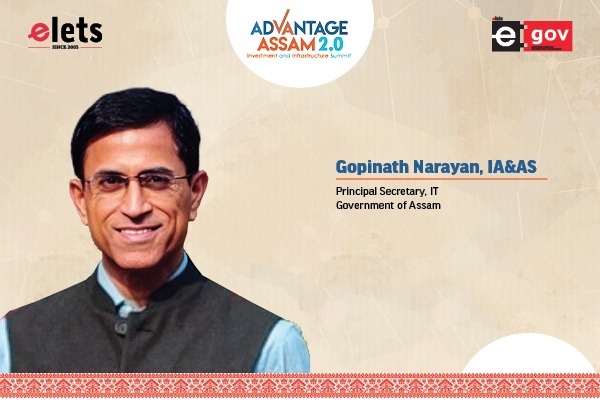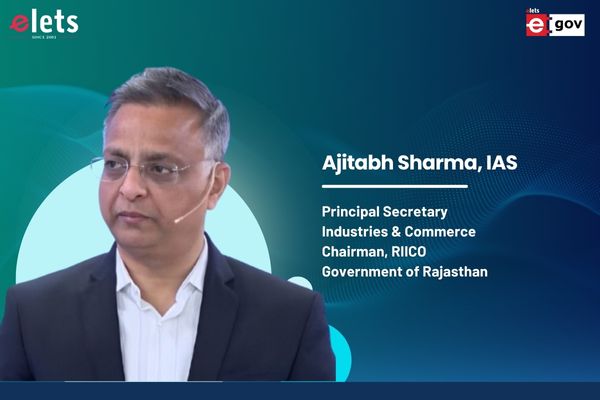
Jaipur City Transport Service Limited (JCTSL) has developed a plan that involves increasing the fleet size, finding ways to provide first and last-mile connectivity, entering into a long-term MOU with electric rickshaw services, and launching a mobile app to improve service quality, shares Shri Ajitabh Sharma, IAS, Chairman & Managing Director, Jaipur City Transport Services Ltd in an exclusive interview with Ritika Srivastava of Elets News Network (ENN).
What measures have you taken to ensure that your organisation provides efficient and safe transport services to the citizens of Jaipur?

Improving urban public transport has always been a challenge for cities worldwide. In Jaipur, there are two main issues that need to be addressed: the coverage of the road network and the service levels provided to citizens. To tackle these challenges, the Jaipur City Transport Service Limited (JCTSL) has developed a plan that involves increasing the fleet size, finding ways to provide first and last-mile connectivity, entering into a long-term MOU with electric rickshaw services, and launching a mobile app to improve service quality.

The first challenge that JCTSL needs to address is the coverage of the road network. Currently, JCTSL only covers around 25% of the major areas of the road network in Jaipur city. To increase this coverage, JCTSL is planning to increase its fleet size by adding another 1000 buses. In 2023, 300 new buses will be added, with another 300 buses in 2024, and the remaining 400 buses to be added in 2025. With this enhancement in fleet size, JCTSL expects to cover 60% of the road network of the city.

The second challenge that JCTSL needs to address is the level of service provided to citizens. One way to improve service levels is to provide first and last-mile connectivity to commuters. JCTSL is planning to enter into a long-term MOU with electric rickshaw services and identify locations in Jaipur that are hindrances for people to adopt public transport. Commuters will be able to use these services to reach pre-identified bus stops of JCTSL.

Another way to improve service levels is to launch a mobile app. JCTSL recently launched a mobile app, which is currently available on the Android platform. Through this app, commuters can see the actual position of the buses. If a bus is delayed due to road congestion or other reasons, commuters can see the exact location of the bus and estimate how long it will take to reach the bus stop. This information can help commuters decide whether to wait for the bus or choose another mode of transportation. This would induce more transparency in our operations and improve our customer engagement too.
How do you see the future of the public transport industry in Jaipur, and what plans do you have to keep up with the changing trends and demands?
Jaipur is a popular tourist destination that is experiencing rapid growth in the knowledge industry. As a capital city, urbanisation is at its peak, with a population of over 40 lakh people. The city is expanding geographically, with new urbanised areas and housing societies emerging in all directions. However, this growth is putting pressure on the existing road network, particularly during peak hours, leading to traffic congestion and giving rise to indirect socio-economic costs.
To address this issue, the fleet size of public transport is being increased, with around 300 more buses approved by the state government for 2023. Additionally, consolidating private minibuses and intermediate public transport (IPT) such as tempos and three-wheelers, is essential. Currently, the minibuses and these IPTs do not operate according to specific regulations by the transport department or traffic police. By identifying critical locations within the urban area and ensuring first and last-mile connectivity, the whole system can become integrated, including the metro, city bus operations, private independent operators, and IPTs. This would create a synergistic ecosystem that can partially resolve the congestion problem, and a separate regulatory framework is being worked upon to implement this.
Furthermore, to encourage more people to adopt public transport, safe, reliable, and time-efficient services must be provided by operators like JCTSL and private bus owners. By improving frequency and ensuring timely services, people will have more reliance and trust in public transport operations, reducing the number of personal transport vehicles on the road.
The rapid growth of Jaipur city is posing significant challenges to its existing road network. However, by increasing public transport fleets, consolidating IPTs, and providing reliable and affordable services, the city can address congestion issues and encourage more people to adopt public transport. These steps will help create a more sustainable, efficient, and livable city for everyone.
How do you balance the need for profitability with the need to provide affordable transport services to the citizens?
Public transport is an essential service that is needed by the majority of people in society, particularly those who cannot afford high out-of-pocket expenses for transportation. Transportation is a derived demand, as people travel for some purpose such as work, school, shopping, recreation, and other social reasons. It is a socioeconomic necessity, and there is a bounden duty on the government to provide affordable and accessible transport services.
Also Read | India’s Power Sector Evolving with Technology: Ajitabh Sharma
While profitability is not the main objective of public transport organisations, it is still necessary to ensure smooth operations and provide regular services to citizens. To achieve this, public transport providers need to focus on improving their efficiency, reducing costs, and increasing revenues. One way to do this is by increasing their earning per kilometre, which can be achieved by rationalising routes and increasing passenger load.
Additionally, public transport providers can seek financial support from the government through schemes such as the Transport Infrastructure Development Fund (TIDF), which provides partial funding for operational expenses and capital expenditures. This funding can help fill any gaps in revenue and cover costs for procuring new buses and expanding operations.
Moreover, public transport providers need to continuously evaluate their operations and make necessary improvements to enhance their efficiency and effectiveness. This includes investing in technology, staff training, and timely maintenance of the fleet. By doing so, they can provide better services to the citizens and contribute to the economic growth of the city.
What innovations has the company implemented in recent years, and what impact have these innovations had on the business?
The transportation sector has undergone a significant transformation in recent years, and technology has played a crucial role in bringing about this change. JCTSL has embraced technological advancements to improve its operations and the latest stages of technology adoption have significantly improved its efficiency and effectiveness.
One of the significant changes that the company has introduced is the adoption of GPS technology, which is now enabled for the whole fleet size. This system has made it easier to monitor the location of each bus in the city, detect if any bus is parked for no reason, and identify curtailments and fake breakdowns. The system also tracks the buses’ adherence to the time schedule and maintains the frequency at bus stops, improving customer satisfaction.
The company has also implemented electronic ticketing machines (ETM) technology in all its buses, which generates data and uploads it to the server whenever a ticket is sold. This data helps the company identify peak load periods and rationalize its operations accordingly. The company can now identify which routes and areas require more buses during peak hours and switch between standard and mini buses to match the passenger load.
Furthermore, the company has recently launched a mobile app that provides passengers with real-time information about the buses’ location and schedules. This app has been integrated with data from the GPS and ETM systems, providing accurate information to the passengers. The company is also working towards developing a passenger information system (PIS) that will provide more information to passengers about bus schedules, routes, and fares.
The company’s adoption of technology has significantly improved its operational efficiency, and its use of data analytics has helped the company identify and address operational inefficiencies. The company’s focus on improving customer satisfaction by leveraging technology is commendable, and its innovative use of data to optimize operations is an example for other companies to follow.
What plans do you have on the sustainability front and how it is shaping the future of public transport in Jaipur?
The impact of climate change is being felt globally, and the regulatory environment is evolving to address this challenge. Urban transport is a critical sector that can contribute significantly to reducing emissions and improving environmental conditions, promoting diversity and creating equity in society. As such, there is a growing need for companies to adopt sustainable practices that support these goals.
One way in which companies are addressing sustainability is by appointing a Chief Sustainability Officer (CSO) to develop environmental, social, and governance (ESG) strategies. The CSO’s role is to work on sustainability and ESG reporting and disclosure framework that is related to the urban public transport sector. JCTSL is the first public transport authority in the country to appoint a CSO.
To reduce emissions and improve air quality, many companies are shifting to the electric mobility ecosystem. In this endeavour, JCTSL has decided to introduce electric buses that are all air-conditioned to provide commuters with a comfortable and healthy travel experience. The company plans to create charging infrastructure and intermittent charging stations at appropriate locations in the city to ensure that the new fleet of electric buses can operate effectively and efficiently.
JCTSL is also focusing on social issues that impact its employees and passengers. The company is creating a more gendersensitive workplace by improving facilities for women conductors, providing childcare leave, and reducing travel time for women employees. JCTSL has also launched a mobile app that allows passengers to book contactless tickets and pay using smart cards, making it easier for them to travel without having to struggle with cash transactions.
On the governance aspect, JCTSL is improving transparency and decisionmaking processes by reaching out to its passengers for feedback through media and social media platforms. The company is also expanding its services to reach low-income households, ensuring that all members of society have access to reliable and affordable public transport.
Be a part of Elets Collaborative Initiatives. Join Us for Upcoming Events and explore business opportunities. Like us on Facebook , connect with us on LinkedIn and follow us on Twitter, Instagram.
"Exciting news! Elets technomedia is now on WhatsApp Channels Subscribe today by clicking the link and stay updated with the latest insights!" Click here!













